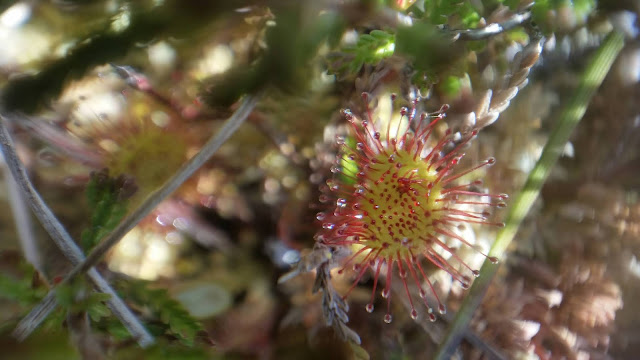 |
| Bog cotton or cottongrass |
The wet areas have a carpet of sphagnum moss. Look carefully at the picture below and you can see the moss in the centre. look even more carefully and you can see some red patches. Sphagnum can be red, but in this case the red patches are a different tiny plant.
 |
| Sphagnum moss and...? |
This is the leaf of a sundew (Drosera rotundifolia) which grows in wet nutrient-poor places and captures extra food by digesting flies which get caught on the sticky droplets. I didn't notice when I took the photo but there is a fly caught on this one. The green oval coming from the centre of the leaves is the flower bud.
They are very beautiful in their tiny way, so I took lots of photos (using a clip on macro lens on my phone).
On the way home I went past a mossy rock face at the back of Craggan.
I wasn't intending to look for lichens but I couldn't resist investigating. I was glad I did as I found a lichen I had never seen before. It was minty green with black spots.
It turned out to be Peltigera brittanica which is found in Scotland but not elsewhere in the UK. The edges are turned up and remind me of a poppadom. Here is a close up which gives a better idea of the colour.
It grows browner when dry, and a much brighter green when wet and grows on mossy acidic rocks in moist woodland, which is exactly where I found it.








No comments:
Post a Comment